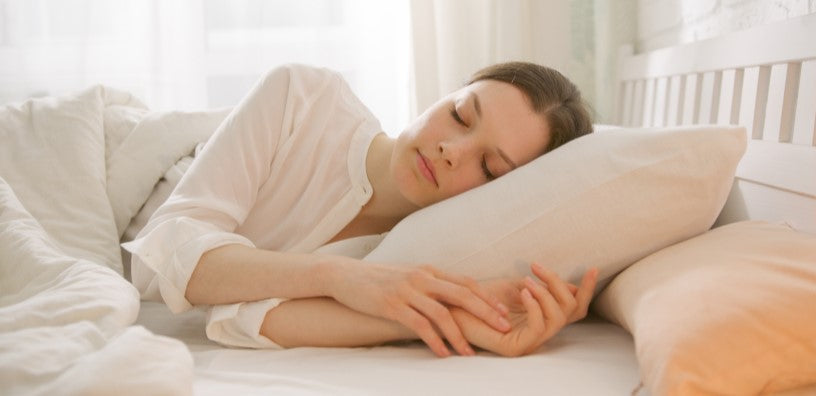
Choosing the Best Pillow
We have all been there– you moved in your sleep and now you’ve woken up with unbearable neck pain because your pillow did not provide the support you needed. For the rest of the day, you try to manage the pain, but it seems like hours before your head and neck feel normal again. What is to blame for this?
Restless, uncomfortable sleep might be a sign that it is time to change your pillow. But how do you know your new pillow won’t cause the same problems? We’ve created a list on all-things pillows so you can decide which is best for you. Say goodbye to restless nights and hello to comfortable sleep!
Do I Really Need A Pillow?
Your sleeping position impacts your sleep quality. An uncomfortable sleeping position can lead to pain throughout your body for the rest of your day. The purpose of a pillow is to support the head and neck, aligning them with your spine and the rest of your body to avoid aching [1]. So how is your head best aligned while sleeping? This all depends on your position.
Side and Back
If you tend to sleep on your back or side, it is very important to use a pillow. Without a pillow, your head will not be in a neutral position with the rest of your body, leading to aches and pains [1]. While sleeping on your side, a pillow supports the gap between the neck and shoulder, preventing a misaligned neck and that unpleasant soreness on its side [2].
On your back, a pillow keeps your head from falling backwards, reducing tension at the top of your spine [2]. Additionally, since pillows support the neck and head, they may have a hand in reducing headaches [3].
Stomach
If you sleep on your stomach, a pillow may often be uncomfortable to use. However, not using a pillow can allocate too much pressure on your lower back, still resulting in pain throughout your body. The solution? Stomach-sleepers may opt for using a thin pillow, that way their neck and head are properly aligned and the risk of lower back pain is reduced.
For your benefit, it is best to use a pillow during your sleep. Now, what kind of pillow should you be using?
Pillow material
Often times, the material of your pillow may be what is causing your restless nights. There are various types of fill and casings that differ in benefits, making it difficult to know which is best for you.
Filling
The most popular types of filling include Down, Down Alternative, and Memory Foam.
Down
Down pillows are filled with bird feathers, most often ducks. “Down” refers to the feathers themselves, which are found under the bird’s protective feathers. Down pillows typically provide a very soft form and texture.
Down Alternative
Down Alternative pillows are designed to mimic the feel of Down pillows, without the animal feather filling. Typically made with synthetic fibers, such as polyester particles, they are easier to maintain and are slightly more affordable. However, they do provide a slightly different feel than the Down filling.
Memory Foam
Memory foam stuffing is argued to be the most comfortable. It conforms to the shape of your head, allowing for maximum comfort while keeping your head aligned with the rest of your body. The filling may come in one block or in several small clumps of memory foam material.
Casing Material
When it comes to pillowcases, it is important to chose which material is best for you. Since this part of the pillow might make direct contact with your face, it is crucial to chose material that won’t negatively impact your sleep and skin. The most popular pillow casing materials include cotton, polyester blends, and bamboo viscose.
Cotton
Cotton is a very common choice when it comes to pillow casings, being one of the most affordable options. It tends to be soft and durable, but might not be the best fit for everyone. Cotton tends to absorb moisture, which might result in an uncomfortable night of sleep if you tend to suffer from night sweats.
Polyester Blends
Polyester is often blended with other materials for pillowcases. It is durable and water-resistant. However, polyester cases tend to be less breathable and slightly irritable for sensitive skin [4].
Bamboo Viscose
Bamboo viscose material has become popular among pillowcases. They are designed to be breathable and temperature-regulating, preventing night sweats and moisture from absorbing into the pillow.
Not only is it perfect for hot sleepers, but it is also beneficial to those with sensitive skin. Bamboo viscose is hypoallergenic, which can naturally ward off common household non-living allergens. Less undesirable buildup means less cleaning and more sleep! Ready to try it? Check out Cosy House’s Luxury Bamboo Pillow.
Although there is an endless list of pillow options, we hope we’ve helped make the decision for you slightly easier. Take into consideration your sleeping position, how much support you need, and how much comfort you’re looking for and get the best night’s sleep.
Let us know which pillow is best for you!
We've gone ahead & enclosed a 10% off coupon below for you to use if you'd like to take the plunge and try out our sheets for yourself! To shop our collection & get 10% OFF Use the code 'BLOG10' at checkout.
Sources
-
Barrell, A. (n.d.). Sleeping without a pillow: Benefits and risks. Medical News Today. Retrieved from https://www.medicalnewstoday.com/articles/sleeping-without-a-pillow#benefits
-
Noyed, D. (2022, March 11). Sleeping without a pillow. Sleep Foundation. Retrieved from https://www.sleepfoundation.org/bedding-information/sleeping-without-a-pillow#:~:text=While%20research%20is%20limited%2C%20anecdotal,spinal%20alignment%20in%20this%20position.
-
Castien , R., & De Hertogh, W. (2019, March 26). A neuroscience perspective of physical treatment of headache and neck pain. Frontiers in neurology. Retrieved from https://pubmed.ncbi.nlm.nih.gov/30972008/
-
Kandola, A. (n.d.). Polyester allergy: Symptoms, treatment, and prevention. Medical News Today. Retrieved from https://www.medicalnewstoday.com/articles/323566#symptoms
